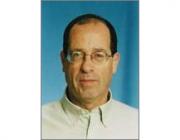In my research and teaching (teaching in which I have always attempted to present my research results) I have been focussing on the following objectives and directions:
- A detailed, precise, corpus-based structural account, synchronic and diachronic, of central issues and subsystems in the languages I have studied; I have also dealt with the in terface of linguistics, philology and ecdotics.
- Aiming at the understanding of specific constructions and patterns in given languages and comparatively between them, and at the subsequent establishment of a typological profile and general appreciation of the studied phenomena and features. So, for instance:
- nexus conversion (1995a, 1995b, 1989a, 1998a, …);
- the Nominal Sentence (noun predication patterns: 1984a, 1987, 1998a ,1999b);
- the Cleft Sentence (1978a, 1978c, 1986a, 1998, 1998a, …).
- The contribution of general linguistic issues towards insights in basic areas of linguistic categorization. For instance:
- the adverb (1986a);
- the Proper Name (1989a, …);
- nominal and verbal specificity (1998a, …);
- possession in general and inalienable possession in particular (1995a, 1994, 1998a, …);
- narrative and dialogue grammar (1989d, 1997, …);
- the grammar of question and response (1981, 1995a, …);
- performatives (1995a, …);
- text linguistics and discourse analysis (passim, esp. 1981b, 1997, 1998a, 1998b, …);
- the adnexal /ad-rhematic status of clauses and phrases (1972, 1986, 1998a);
- “mise en relief” (1986a, 1998a, …);
- juncture features - linkage and delimitation (1998a, …);
- the structural model and linguistic analysis (1986a, 1987, 1998a);
- the part-of-speech and other aprioristic logico-semantic models (1986a, 1998a, etc.);
- the diachronic perspective (1973, 1974, 1981a, 1989c, 2000, …);
- questions of terminology and conceptualization in grammatical analysis (passim);
- methods in dead-language research and teaching (1988 and passim);
- the non-geographical Sprachbund (1995a, 1998a, …).

